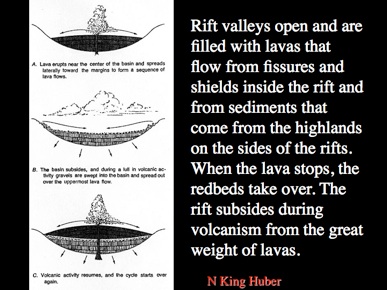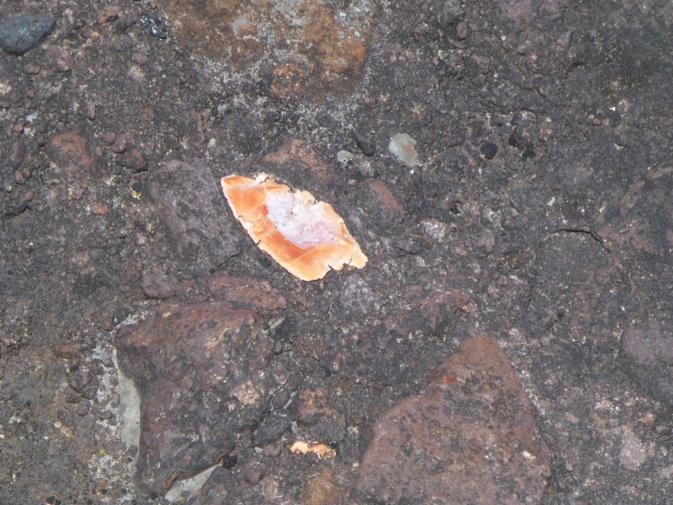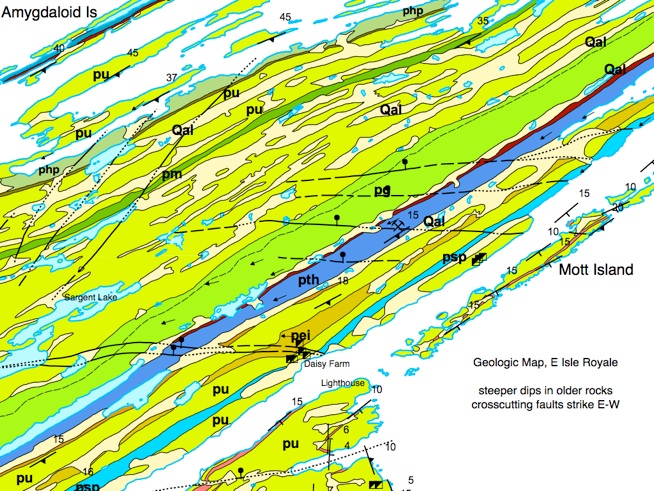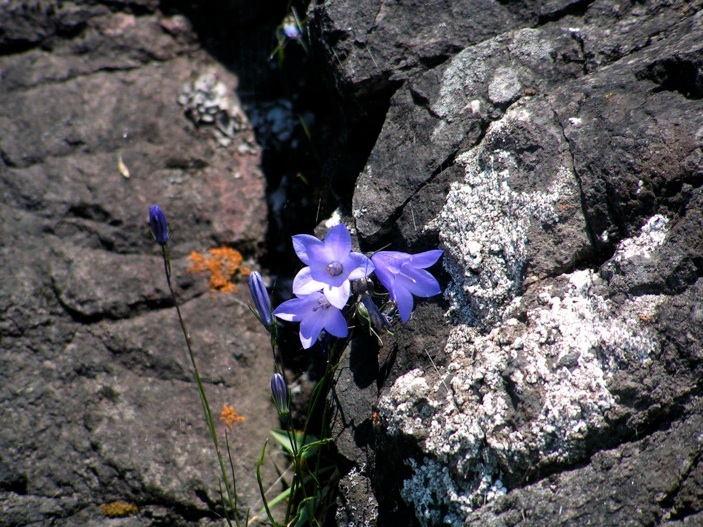Mott Island
From the lighthouse, we will return to the fishery and take the boat across the Middle Island Passage to Mott Island (about 3.2 km (2 mi) NE). We will stop here to visit one of the best exposures of sedimentary units within the PLV, found at the SW end of the island, facing East Caribou Island near the park headquarters complex. There are seven such units mapped by Huber (1973) in the Chippewa Harbor area. Most of them are remarkably constant in thickness and lithology throughout their lateral extents, which are 65 km (40 mi) or more. Paces (1988) reports the following about interflow sediments in the PLV:

Interflow sedimentary beds vary in thickness from less than 1 cm (0.4 in) thick fine-grained siltstones filling fractures between flow top fragments to coarse boulder conglomerates over 100 m (330ft.) thick locally. Typically, interflow sediments are poorly sorted, lithologically immature conglomerates and sandstones derived from a nearby volcanic source ofsome relief and deposited in an alluvial fan-type environment (Merk and Jirsa 1982).
Transportation was generally from the SE to Nl¥, or from basin margins towards the center of the subsiding graben (White 1952). Although the interflow sediments are volumetrically insignificant within the PLV (3% of the total lithologic volume) (Merk and Jirsa 1982; White 1971), they form distinct and relatively continuous stratigraphic marker horizons within an otherwise monotonous volcanic pile. The occurrence of occasional interflow sediments implies that rates of lava flow extrusion, sedimentation, and/or tectonic subsidence were not constant during the formation of the PLV. White (1960) shows that a subsidence-depositional equilibrium was established so that both lava flows and sediments were deposited on near-horizontal surfaces. Most lava flows were deposited directly on top of the underlying lava flow top indicating a more-or-less constant and relatively short repose period between eruptions. The infrequent presence of sedimentary beds between lava flows may indicate occasional hiatuses in magma extrusion, which allowed or alluvial fans to transgress out towards the center of the basin. Conversely, interflow sedimentary horizons may mark brief periods of increased depositional rates possibly related to episodic normal faulting and basin subsidence.
--Paces 1988
The pebble conglomerate unit at Mott Island is thicker than most, about 12 m (40 ft.). The pebbles are essentially all of volcanic rock, with mafic varieties about twice as abundant as felsic ones. The sandstones are very feldspathic, plagioclase being most abundant. Fine-grained hematite is ubiquitous. The rocks have scour and fill structure, suggesting an origin in braided stream environments. Desiccation cracks and raindrop impressions have also been noted. Paleocurrent data suggest transport to the SE, similar to the CHC (Huber 1973a).






